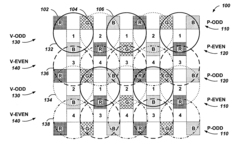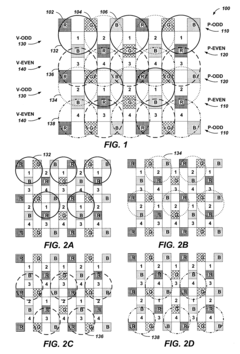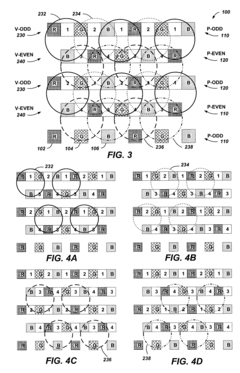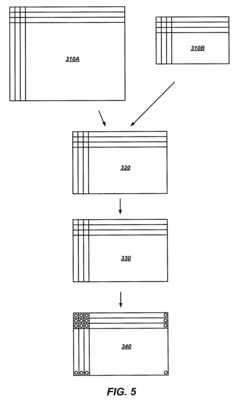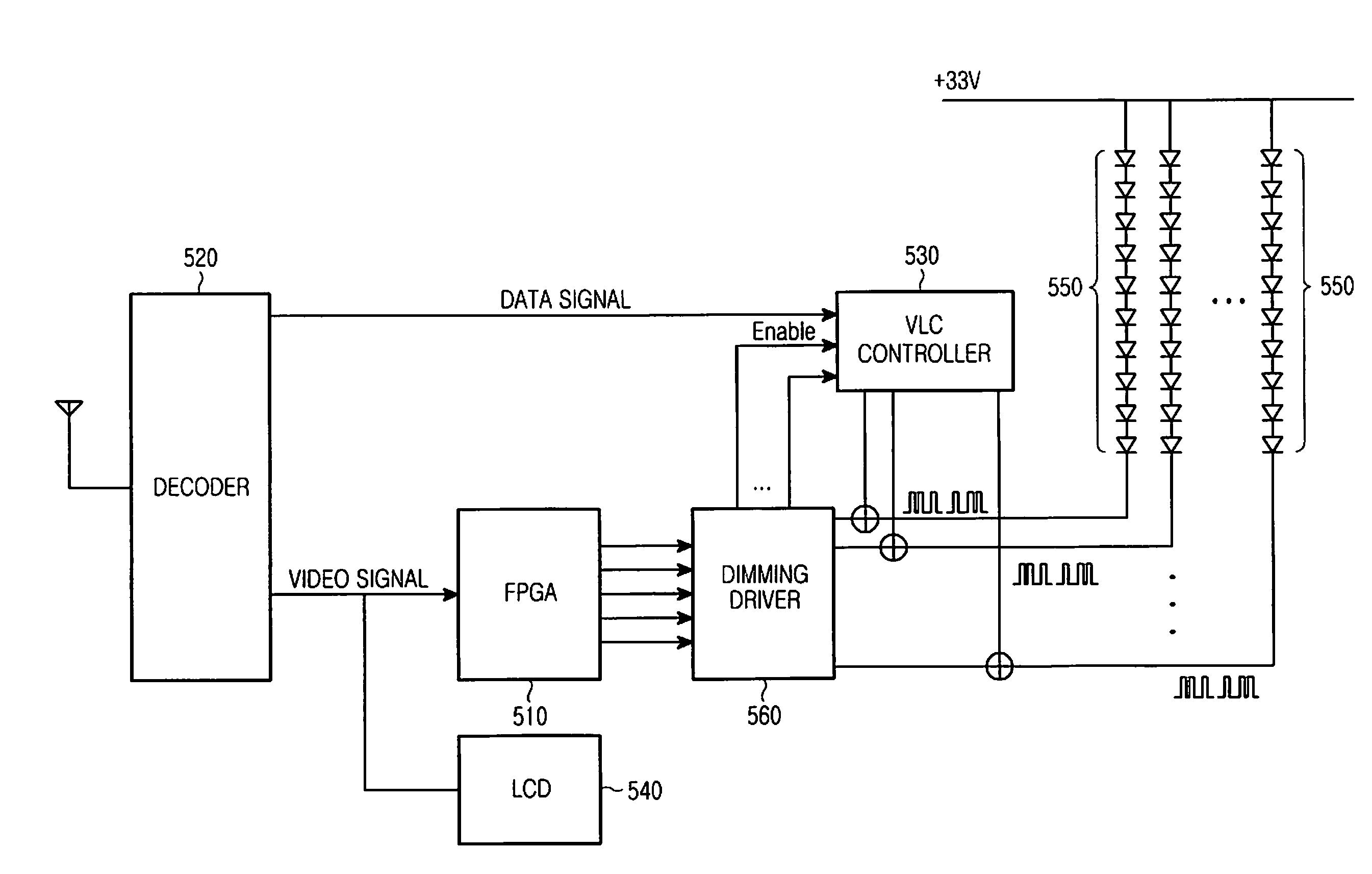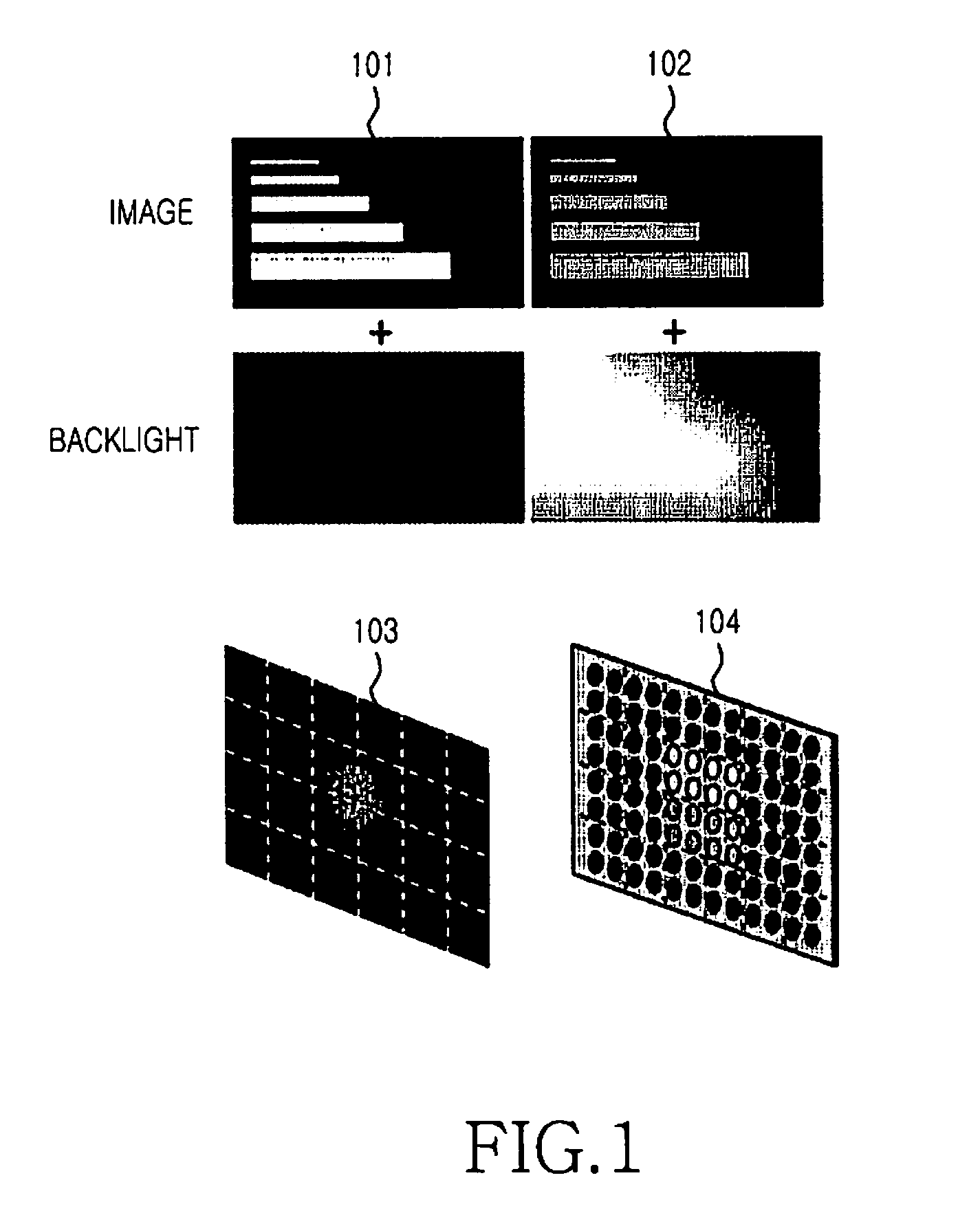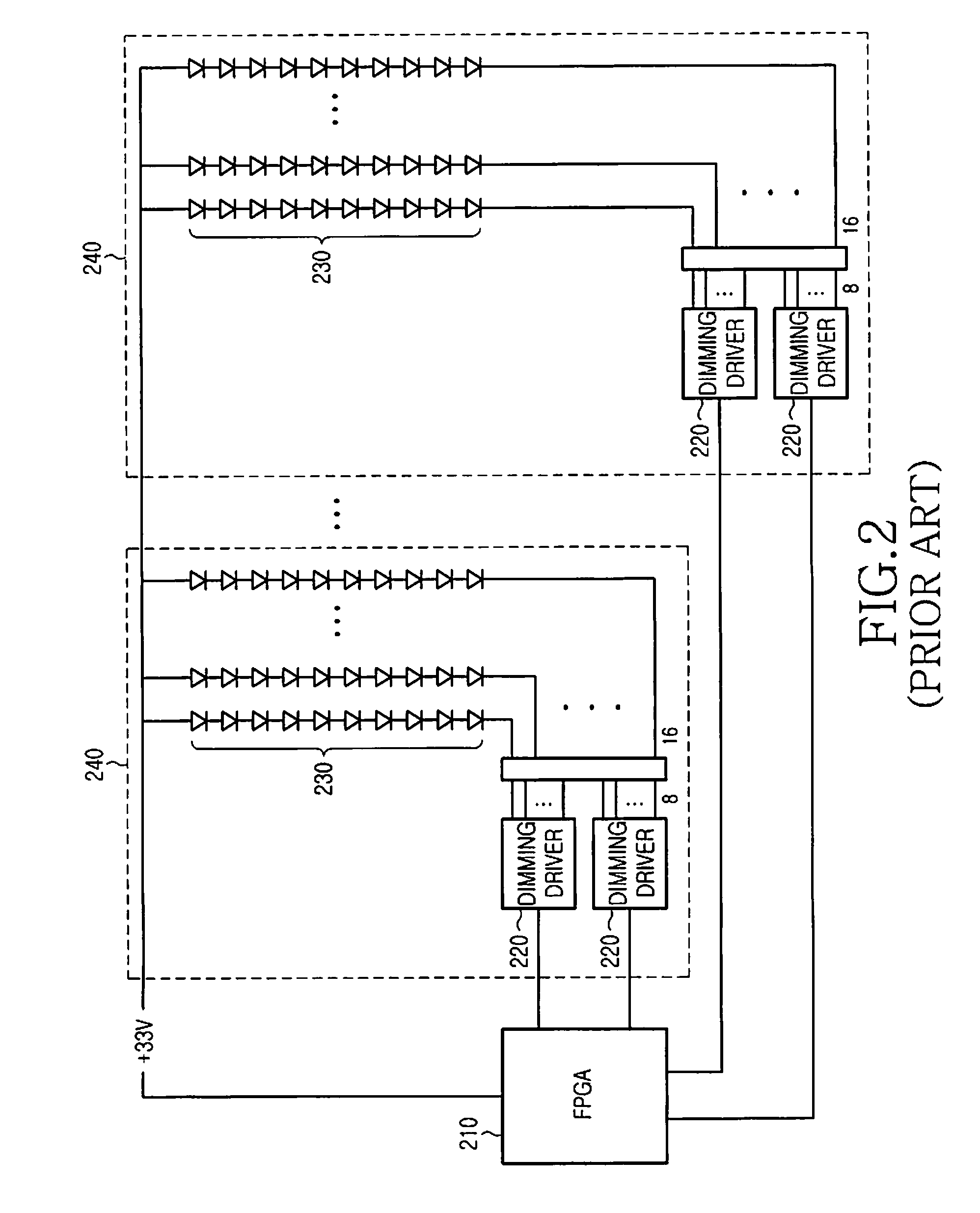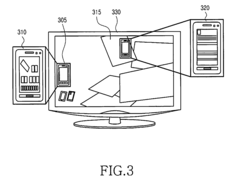ULED Displays: Enhancing Visual Experiences
JUN 23, 20259 MIN READ
Generate Your Research Report Instantly with AI Agent
Patsnap Eureka helps you evaluate technical feasibility & market potential.
ULED Technology Evolution
ULED (Ultra Light Emitting Diode) technology has undergone significant evolution since its inception, marking a revolutionary advancement in display technology. The journey of ULED displays began with the development of traditional LED technology, which laid the foundation for this cutting-edge innovation.
In the early stages, LED displays were primarily used for large outdoor screens and billboards due to their brightness and energy efficiency. However, the pixel density and color accuracy were limited, restricting their application in consumer electronics. The introduction of OLED (Organic Light Emitting Diode) technology in the late 1990s marked a significant milestone, offering improved color reproduction and contrast ratios.
ULED technology emerged as a response to the limitations of both LED and OLED displays. It combines the best features of both technologies, aiming to deliver superior picture quality, enhanced brightness, and improved energy efficiency. The development of ULED displays has been driven by the demand for more immersive visual experiences in various applications, including televisions, smartphones, and professional monitors.
One of the key advancements in ULED technology has been the implementation of local dimming techniques. This innovation allows for precise control of backlight zones, resulting in deeper blacks and improved contrast ratios. Additionally, the integration of quantum dot technology has significantly expanded the color gamut, enabling ULED displays to reproduce a wider range of colors with greater accuracy.
Another crucial aspect of ULED evolution has been the focus on energy efficiency. Through the use of advanced materials and optimized backlight systems, ULED displays have achieved higher brightness levels while consuming less power compared to their predecessors. This improvement in energy efficiency has made ULED technology increasingly attractive for both consumer and commercial applications.
The miniaturization of LED components has played a vital role in the progression of ULED technology. As manufacturers have developed methods to produce smaller LED chips, it has become possible to create displays with higher pixel densities, resulting in sharper and more detailed images. This advancement has been particularly significant in the development of high-resolution displays for smartphones and tablets.
Recent years have seen the emergence of Micro-LED technology, which represents the next frontier in ULED evolution. Micro-LED displays promise even greater improvements in brightness, contrast, and energy efficiency. While still in the early stages of commercialization, Micro-LED technology is expected to further enhance visual experiences across a wide range of applications.
In the early stages, LED displays were primarily used for large outdoor screens and billboards due to their brightness and energy efficiency. However, the pixel density and color accuracy were limited, restricting their application in consumer electronics. The introduction of OLED (Organic Light Emitting Diode) technology in the late 1990s marked a significant milestone, offering improved color reproduction and contrast ratios.
ULED technology emerged as a response to the limitations of both LED and OLED displays. It combines the best features of both technologies, aiming to deliver superior picture quality, enhanced brightness, and improved energy efficiency. The development of ULED displays has been driven by the demand for more immersive visual experiences in various applications, including televisions, smartphones, and professional monitors.
One of the key advancements in ULED technology has been the implementation of local dimming techniques. This innovation allows for precise control of backlight zones, resulting in deeper blacks and improved contrast ratios. Additionally, the integration of quantum dot technology has significantly expanded the color gamut, enabling ULED displays to reproduce a wider range of colors with greater accuracy.
Another crucial aspect of ULED evolution has been the focus on energy efficiency. Through the use of advanced materials and optimized backlight systems, ULED displays have achieved higher brightness levels while consuming less power compared to their predecessors. This improvement in energy efficiency has made ULED technology increasingly attractive for both consumer and commercial applications.
The miniaturization of LED components has played a vital role in the progression of ULED technology. As manufacturers have developed methods to produce smaller LED chips, it has become possible to create displays with higher pixel densities, resulting in sharper and more detailed images. This advancement has been particularly significant in the development of high-resolution displays for smartphones and tablets.
Recent years have seen the emergence of Micro-LED technology, which represents the next frontier in ULED evolution. Micro-LED displays promise even greater improvements in brightness, contrast, and energy efficiency. While still in the early stages of commercialization, Micro-LED technology is expected to further enhance visual experiences across a wide range of applications.
Market Demand Analysis
The market demand for ULED (Ultra Light Emitting Diode) displays has been experiencing significant growth in recent years, driven by the increasing consumer appetite for enhanced visual experiences across various sectors. This technology promises to deliver superior image quality, higher brightness, and improved energy efficiency compared to traditional LED and OLED displays.
In the consumer electronics sector, ULED displays are gaining traction in high-end televisions and monitors. The demand is particularly strong among tech-savvy consumers and early adopters who seek cutting-edge visual technology for their home entertainment systems. The gaming industry is also showing keen interest in ULED technology, as it offers faster response times and better color accuracy, crucial factors for competitive gaming.
The automotive industry represents another significant market for ULED displays. As vehicles become more technologically advanced, there is a growing demand for high-quality, durable displays for infotainment systems, digital dashboards, and heads-up displays. ULED technology's ability to deliver bright, clear images even in challenging lighting conditions makes it particularly suitable for automotive applications.
In the commercial sector, ULED displays are finding applications in digital signage, control rooms, and large-scale visualization systems. The technology's high brightness and contrast ratio make it ideal for use in public spaces, retail environments, and outdoor advertising. The ability to produce vivid, eye-catching visuals is driving adoption in these areas.
The healthcare industry is also emerging as a potential market for ULED displays. The technology's superior image quality and color accuracy make it suitable for medical imaging applications, where precise visualization is critical for accurate diagnosis and treatment planning.
Market analysts predict robust growth for the ULED display market over the next five years. Factors contributing to this growth include ongoing technological advancements, decreasing production costs, and increasing awareness of the technology's benefits among consumers and businesses.
However, challenges remain in terms of manufacturing complexity and initial cost. ULED displays are currently more expensive to produce than traditional LED displays, which may limit their adoption in price-sensitive markets. Additionally, competition from other emerging display technologies, such as microLED, could impact ULED's market share in certain segments.
Despite these challenges, the overall market outlook for ULED displays remains positive. As production processes improve and economies of scale are achieved, prices are expected to decrease, making the technology more accessible to a broader range of consumers and industries. The ongoing trend towards higher resolution and improved visual experiences across various applications suggests that ULED displays are well-positioned to capture a significant share of the global display market in the coming years.
In the consumer electronics sector, ULED displays are gaining traction in high-end televisions and monitors. The demand is particularly strong among tech-savvy consumers and early adopters who seek cutting-edge visual technology for their home entertainment systems. The gaming industry is also showing keen interest in ULED technology, as it offers faster response times and better color accuracy, crucial factors for competitive gaming.
The automotive industry represents another significant market for ULED displays. As vehicles become more technologically advanced, there is a growing demand for high-quality, durable displays for infotainment systems, digital dashboards, and heads-up displays. ULED technology's ability to deliver bright, clear images even in challenging lighting conditions makes it particularly suitable for automotive applications.
In the commercial sector, ULED displays are finding applications in digital signage, control rooms, and large-scale visualization systems. The technology's high brightness and contrast ratio make it ideal for use in public spaces, retail environments, and outdoor advertising. The ability to produce vivid, eye-catching visuals is driving adoption in these areas.
The healthcare industry is also emerging as a potential market for ULED displays. The technology's superior image quality and color accuracy make it suitable for medical imaging applications, where precise visualization is critical for accurate diagnosis and treatment planning.
Market analysts predict robust growth for the ULED display market over the next five years. Factors contributing to this growth include ongoing technological advancements, decreasing production costs, and increasing awareness of the technology's benefits among consumers and businesses.
However, challenges remain in terms of manufacturing complexity and initial cost. ULED displays are currently more expensive to produce than traditional LED displays, which may limit their adoption in price-sensitive markets. Additionally, competition from other emerging display technologies, such as microLED, could impact ULED's market share in certain segments.
Despite these challenges, the overall market outlook for ULED displays remains positive. As production processes improve and economies of scale are achieved, prices are expected to decrease, making the technology more accessible to a broader range of consumers and industries. The ongoing trend towards higher resolution and improved visual experiences across various applications suggests that ULED displays are well-positioned to capture a significant share of the global display market in the coming years.
ULED Technical Challenges
ULED (Ultra Light Emitting Diode) displays represent a significant advancement in display technology, offering enhanced visual experiences. However, the development and implementation of ULED technology face several technical challenges that need to be addressed for widespread adoption.
One of the primary challenges is achieving uniform light distribution across the display panel. ULEDs are extremely small light sources, and ensuring consistent brightness and color across the entire screen requires precise control and placement of each diode. This becomes increasingly difficult as display sizes grow larger, necessitating advanced manufacturing techniques and sophisticated control algorithms.
Another significant hurdle is thermal management. ULEDs generate heat during operation, which can affect their performance and lifespan. As display resolutions increase and pixel densities become higher, the heat generated by closely packed ULEDs becomes more concentrated. Developing effective heat dissipation mechanisms without compromising the display's thinness and flexibility is a complex engineering challenge.
Color accuracy and consistency pose additional technical difficulties. ULEDs must produce a wide color gamut while maintaining color fidelity across different brightness levels and viewing angles. This requires precise control of each diode's output and advanced color management systems. Furthermore, achieving deep blacks and high contrast ratios in ULED displays remains a challenge, particularly in ambient light conditions.
Power efficiency is another critical area of focus. While ULEDs are generally more energy-efficient than traditional LED displays, further improvements are needed to reduce power consumption, especially for battery-powered devices. This involves optimizing the electrical characteristics of individual ULEDs and developing more efficient driving circuits.
Durability and longevity of ULED displays present ongoing challenges. The microscopic size of ULEDs makes them susceptible to degradation over time, potentially leading to non-uniform aging across the display. Developing robust materials and protective coatings that can withstand environmental factors while maintaining optical performance is crucial for long-term reliability.
Manufacturing scalability remains a significant hurdle in ULED technology. The production of ULED displays requires extremely precise fabrication processes, including the accurate placement and connection of millions of tiny diodes. Developing cost-effective, high-yield manufacturing techniques that can be scaled to mass production is essential for the widespread adoption of ULED displays.
Addressing these technical challenges requires interdisciplinary collaboration among materials scientists, electrical engineers, optical experts, and manufacturing specialists. As research progresses, overcoming these hurdles will pave the way for ULED displays to revolutionize visual experiences across various applications, from consumer electronics to professional displays and beyond.
One of the primary challenges is achieving uniform light distribution across the display panel. ULEDs are extremely small light sources, and ensuring consistent brightness and color across the entire screen requires precise control and placement of each diode. This becomes increasingly difficult as display sizes grow larger, necessitating advanced manufacturing techniques and sophisticated control algorithms.
Another significant hurdle is thermal management. ULEDs generate heat during operation, which can affect their performance and lifespan. As display resolutions increase and pixel densities become higher, the heat generated by closely packed ULEDs becomes more concentrated. Developing effective heat dissipation mechanisms without compromising the display's thinness and flexibility is a complex engineering challenge.
Color accuracy and consistency pose additional technical difficulties. ULEDs must produce a wide color gamut while maintaining color fidelity across different brightness levels and viewing angles. This requires precise control of each diode's output and advanced color management systems. Furthermore, achieving deep blacks and high contrast ratios in ULED displays remains a challenge, particularly in ambient light conditions.
Power efficiency is another critical area of focus. While ULEDs are generally more energy-efficient than traditional LED displays, further improvements are needed to reduce power consumption, especially for battery-powered devices. This involves optimizing the electrical characteristics of individual ULEDs and developing more efficient driving circuits.
Durability and longevity of ULED displays present ongoing challenges. The microscopic size of ULEDs makes them susceptible to degradation over time, potentially leading to non-uniform aging across the display. Developing robust materials and protective coatings that can withstand environmental factors while maintaining optical performance is crucial for long-term reliability.
Manufacturing scalability remains a significant hurdle in ULED technology. The production of ULED displays requires extremely precise fabrication processes, including the accurate placement and connection of millions of tiny diodes. Developing cost-effective, high-yield manufacturing techniques that can be scaled to mass production is essential for the widespread adoption of ULED displays.
Addressing these technical challenges requires interdisciplinary collaboration among materials scientists, electrical engineers, optical experts, and manufacturing specialists. As research progresses, overcoming these hurdles will pave the way for ULED displays to revolutionize visual experiences across various applications, from consumer electronics to professional displays and beyond.
Current ULED Solutions
01 Enhanced visual experience through advanced display technologies
ULED displays offer improved visual experiences through advanced technologies such as high dynamic range (HDR), wide color gamut, and local dimming. These features contribute to better contrast, more vibrant colors, and deeper blacks, resulting in a more immersive viewing experience.- Enhanced visual experience through advanced display technologies: ULED displays offer improved visual experiences through advanced technologies such as high dynamic range (HDR), wide color gamut, and local dimming. These features contribute to better contrast, more vibrant colors, and deeper blacks, resulting in a more immersive viewing experience.
- Improved energy efficiency and brightness: ULED displays incorporate energy-efficient LED backlighting systems and advanced light management techniques. This results in brighter displays with lower power consumption, enhancing both visual quality and energy efficiency.
- Enhanced image processing and upscaling: ULED displays utilize advanced image processing algorithms and upscaling techniques to improve picture quality. These technologies enhance detail, reduce noise, and optimize content for display on high-resolution screens, resulting in sharper and more realistic images.
- Innovative display panel designs: ULED displays incorporate innovative panel designs, including ultra-thin profiles, curved screens, and bezel-less configurations. These design elements contribute to a more immersive viewing experience and improved aesthetics.
- Integration of smart features and connectivity: ULED displays often include smart features and enhanced connectivity options. These may include voice control, integrated streaming services, and seamless integration with other smart home devices, providing a more interactive and user-friendly viewing experience.
02 Improved energy efficiency and brightness
ULED displays incorporate energy-efficient LED backlighting systems and advanced light management techniques. This results in improved brightness levels while maintaining lower power consumption compared to traditional display technologies.Expand Specific Solutions03 Enhanced image processing and upscaling
ULED displays utilize advanced image processing algorithms and upscaling techniques to improve the quality of lower resolution content. This allows for better detail preservation, reduced noise, and smoother motion, enhancing the overall visual experience.Expand Specific Solutions04 Improved viewing angles and uniformity
ULED displays incorporate technologies to enhance viewing angles and improve screen uniformity. This results in consistent image quality and color accuracy across the entire display, even when viewed from off-center positions.Expand Specific Solutions05 Integration of smart features and connectivity
ULED displays often incorporate smart features and enhanced connectivity options. This includes integration with voice assistants, support for various streaming services, and improved user interfaces, contributing to a more versatile and user-friendly visual experience.Expand Specific Solutions
Key ULED Industry Players
The ULED display market is in a growth phase, driven by increasing demand for enhanced visual experiences across various sectors. The market size is expanding rapidly, with projections indicating significant growth in the coming years. Technologically, ULED displays are advancing quickly, with major players like Samsung Electronics, LG Electronics, and Sony Group Corp leading innovation. These companies, along with others such as Sharp Corp and TCL China Star Optoelectronics Technology, are pushing the boundaries of ULED technology, improving factors like brightness, color accuracy, and energy efficiency. The competitive landscape is intense, with established electronics giants competing against specialized display manufacturers like Visionox Technology and Everdisplay Optronics. As the technology matures, we're seeing increased applications in consumer electronics, automotive displays, and professional visualization sectors.
Samsung Electronics Co., Ltd.
Technical Solution: Samsung has developed ULED (Ultra LED) display technology, which combines Quantum Dot technology with ultra-thin LED backlighting. This approach allows for enhanced color accuracy, improved contrast ratios, and increased brightness levels compared to traditional LED displays. Samsung's ULED displays utilize advanced local dimming techniques to achieve deeper blacks and more vibrant colors, resulting in a more immersive viewing experience. The company has also implemented AI-powered upscaling algorithms to enhance lower resolution content on their ULED displays, ensuring optimal picture quality regardless of the source material.
Strengths: Superior color accuracy and contrast ratios, enhanced brightness levels, and AI-powered upscaling. Weaknesses: Potentially higher production costs compared to standard LED displays, and the need for specialized manufacturing processes.
LG Electronics, Inc.
Technical Solution: LG has introduced its own version of ULED technology, which they call NanoCell ULED. This technology combines LG's NanoCell color enhancement with ultra-thin LED backlighting to produce vivid and accurate colors. LG's ULED displays feature a wide color gamut and utilize advanced local dimming algorithms to improve contrast and black levels. The company has also integrated its α9 Gen 4 AI Processor into ULED TVs, which uses deep learning to optimize picture and sound quality based on the content being displayed. Additionally, LG has implemented HDMI 2.1 features in their ULED displays, supporting high frame rates and variable refresh rates for improved gaming experiences.
Strengths: Wide color gamut, advanced AI-powered picture processing, and gaming-friendly features. Weaknesses: Potential for increased power consumption due to high brightness levels, and higher price points compared to standard LED displays.
ULED Core Innovations
Apparatus and method for mapping virtual pixels to physical light elements of a display
PatentActiveUS20110140999A1
Innovation
- The method involves creating virtual pixels that share pixel information amongst shared LEDs, with interleaved rows of LEDs in a repeating pattern of different colors, allowing for an apparent resolution higher than the actual physical pixel resolution by combining frames to generate a presentation image.
Method and apparatus for providing additional information through display
PatentInactiveUS20110063510A1
Innovation
- Implementing visible light communication using Light Emitting Diodes (LEDs) as backlights to encode and transmit additional data signals alongside video signals, allowing specific information to be delivered to corresponding areas of the screen via a decoder, visible light communication controller, and LED blocks, and received by a terminal equipped with a visible light communication unit.
ULED Energy Efficiency
ULED displays have made significant strides in energy efficiency, positioning themselves as a promising technology for sustainable visual experiences. The energy efficiency of ULED displays is primarily attributed to their advanced backlighting system and precise local dimming capabilities.
ULED technology employs a sophisticated multi-zone local dimming system, which allows for precise control of the backlight in specific areas of the screen. This granular control enables the display to selectively dim or brighten different regions, resulting in improved contrast ratios and reduced power consumption. By dimming or turning off the backlight in darker areas of the image, ULED displays can significantly reduce energy waste compared to traditional LED displays.
Furthermore, ULED displays incorporate advanced quantum dot technology, which enhances color accuracy and brightness while consuming less power. Quantum dots are nanoscale semiconductor particles that emit light of specific wavelengths when excited by electricity. This technology allows ULED displays to produce a wider color gamut with higher efficiency, reducing the overall power requirements for achieving vibrant and accurate colors.
The energy efficiency of ULED displays is also enhanced by their use of advanced light management techniques. These include optical films and light guide plates that optimize light distribution and minimize light loss within the display. By maximizing the utilization of light produced by the backlight, ULED displays can achieve higher brightness levels with lower power consumption.
In addition to hardware optimizations, ULED displays often incorporate intelligent power management systems. These systems dynamically adjust the display's brightness and contrast based on ambient lighting conditions and content being displayed. This adaptive approach ensures that the display consumes only the necessary amount of power to deliver optimal image quality in various viewing environments.
Compared to traditional LED and OLED displays, ULED technology demonstrates superior energy efficiency in many scenarios. While OLED displays excel in producing deep blacks by turning off individual pixels, they can consume more power when displaying bright content. ULED displays, on the other hand, maintain consistent energy efficiency across various content types, making them particularly suitable for applications that require sustained high brightness levels.
As the technology continues to evolve, researchers are exploring new materials and techniques to further enhance the energy efficiency of ULED displays. These advancements include the development of more efficient quantum dot materials, improved local dimming algorithms, and the integration of artificial intelligence for optimized power management. These ongoing innovations promise to solidify ULED's position as a leading technology for energy-efficient visual experiences in the future.
ULED technology employs a sophisticated multi-zone local dimming system, which allows for precise control of the backlight in specific areas of the screen. This granular control enables the display to selectively dim or brighten different regions, resulting in improved contrast ratios and reduced power consumption. By dimming or turning off the backlight in darker areas of the image, ULED displays can significantly reduce energy waste compared to traditional LED displays.
Furthermore, ULED displays incorporate advanced quantum dot technology, which enhances color accuracy and brightness while consuming less power. Quantum dots are nanoscale semiconductor particles that emit light of specific wavelengths when excited by electricity. This technology allows ULED displays to produce a wider color gamut with higher efficiency, reducing the overall power requirements for achieving vibrant and accurate colors.
The energy efficiency of ULED displays is also enhanced by their use of advanced light management techniques. These include optical films and light guide plates that optimize light distribution and minimize light loss within the display. By maximizing the utilization of light produced by the backlight, ULED displays can achieve higher brightness levels with lower power consumption.
In addition to hardware optimizations, ULED displays often incorporate intelligent power management systems. These systems dynamically adjust the display's brightness and contrast based on ambient lighting conditions and content being displayed. This adaptive approach ensures that the display consumes only the necessary amount of power to deliver optimal image quality in various viewing environments.
Compared to traditional LED and OLED displays, ULED technology demonstrates superior energy efficiency in many scenarios. While OLED displays excel in producing deep blacks by turning off individual pixels, they can consume more power when displaying bright content. ULED displays, on the other hand, maintain consistent energy efficiency across various content types, making them particularly suitable for applications that require sustained high brightness levels.
As the technology continues to evolve, researchers are exploring new materials and techniques to further enhance the energy efficiency of ULED displays. These advancements include the development of more efficient quantum dot materials, improved local dimming algorithms, and the integration of artificial intelligence for optimized power management. These ongoing innovations promise to solidify ULED's position as a leading technology for energy-efficient visual experiences in the future.
ULED Manufacturing Process
The ULED manufacturing process represents a critical aspect of advancing ULED display technology. This process involves several sophisticated steps, each contributing to the creation of high-performance, energy-efficient displays.
The foundation of ULED manufacturing lies in the production of ultra-small light-emitting diodes (LEDs). These LEDs are typically fabricated using advanced epitaxial growth techniques, such as metal-organic chemical vapor deposition (MOCVD). The process begins with the deposition of multiple semiconductor layers on a substrate, usually sapphire or silicon carbide. These layers include the n-type and p-type regions, as well as the active region where light emission occurs.
Following the epitaxial growth, the wafer undergoes a series of photolithography and etching steps to define the individual LED structures. This process is crucial for creating the precise dimensions and patterns required for ULED displays. The miniaturization of LEDs to micro-scale dimensions presents significant challenges, requiring state-of-the-art lithography equipment and highly controlled etching processes.
Once the LED structures are formed, the next critical step is the transfer and integration of these micro-LEDs onto the display backplane. This process, known as mass transfer, is one of the most challenging aspects of ULED manufacturing. Various techniques have been developed, including pick-and-place methods and laser-assisted transfer. The accuracy and efficiency of this transfer process directly impact the yield and cost-effectiveness of ULED production.
After transfer, the micro-LEDs are electrically connected to the backplane circuitry. This typically involves advanced bonding techniques such as flip-chip bonding or thermocompression bonding. The precision required in this step is crucial for ensuring uniform performance across the display.
The final stages of ULED manufacturing involve the application of color conversion layers for full-color displays. This can be achieved through various methods, including the use of quantum dot color converters or phosphor-based materials. The uniformity and efficiency of these color conversion layers are critical for achieving the high color gamut and brightness that ULED displays are known for.
Quality control and testing are integral throughout the manufacturing process. Advanced inspection techniques, including automated optical inspection and electrical testing, are employed to ensure the functionality and uniformity of each micro-LED and the overall display.
The ULED manufacturing process continues to evolve, with ongoing research focused on improving yield, reducing costs, and enhancing performance. Innovations in areas such as nanomaterial synthesis, advanced lithography, and automated assembly techniques are expected to drive further advancements in ULED manufacturing capabilities.
The foundation of ULED manufacturing lies in the production of ultra-small light-emitting diodes (LEDs). These LEDs are typically fabricated using advanced epitaxial growth techniques, such as metal-organic chemical vapor deposition (MOCVD). The process begins with the deposition of multiple semiconductor layers on a substrate, usually sapphire or silicon carbide. These layers include the n-type and p-type regions, as well as the active region where light emission occurs.
Following the epitaxial growth, the wafer undergoes a series of photolithography and etching steps to define the individual LED structures. This process is crucial for creating the precise dimensions and patterns required for ULED displays. The miniaturization of LEDs to micro-scale dimensions presents significant challenges, requiring state-of-the-art lithography equipment and highly controlled etching processes.
Once the LED structures are formed, the next critical step is the transfer and integration of these micro-LEDs onto the display backplane. This process, known as mass transfer, is one of the most challenging aspects of ULED manufacturing. Various techniques have been developed, including pick-and-place methods and laser-assisted transfer. The accuracy and efficiency of this transfer process directly impact the yield and cost-effectiveness of ULED production.
After transfer, the micro-LEDs are electrically connected to the backplane circuitry. This typically involves advanced bonding techniques such as flip-chip bonding or thermocompression bonding. The precision required in this step is crucial for ensuring uniform performance across the display.
The final stages of ULED manufacturing involve the application of color conversion layers for full-color displays. This can be achieved through various methods, including the use of quantum dot color converters or phosphor-based materials. The uniformity and efficiency of these color conversion layers are critical for achieving the high color gamut and brightness that ULED displays are known for.
Quality control and testing are integral throughout the manufacturing process. Advanced inspection techniques, including automated optical inspection and electrical testing, are employed to ensure the functionality and uniformity of each micro-LED and the overall display.
The ULED manufacturing process continues to evolve, with ongoing research focused on improving yield, reducing costs, and enhancing performance. Innovations in areas such as nanomaterial synthesis, advanced lithography, and automated assembly techniques are expected to drive further advancements in ULED manufacturing capabilities.
Unlock deeper insights with Patsnap Eureka Quick Research — get a full tech report to explore trends and direct your research. Try now!
Generate Your Research Report Instantly with AI Agent
Supercharge your innovation with Patsnap Eureka AI Agent Platform!
